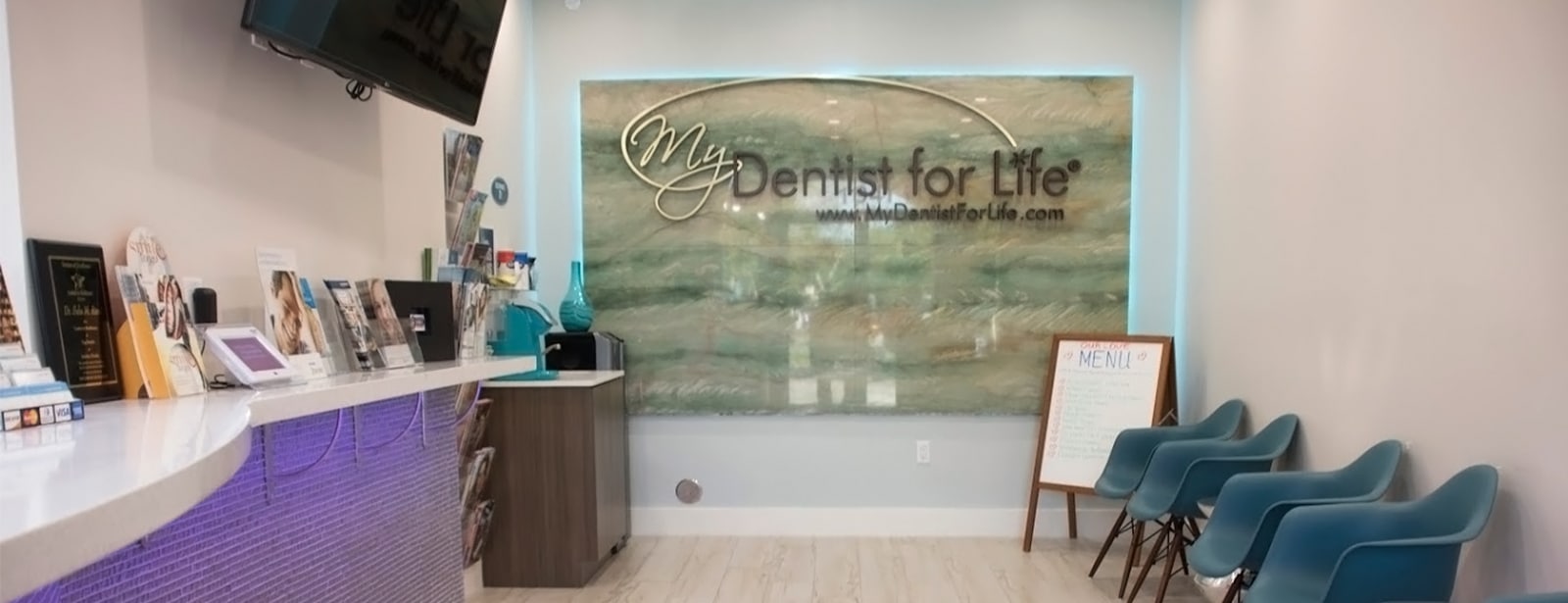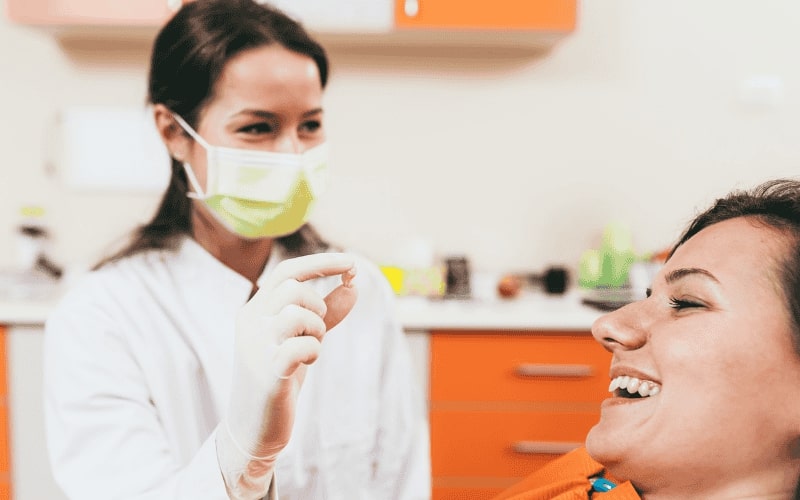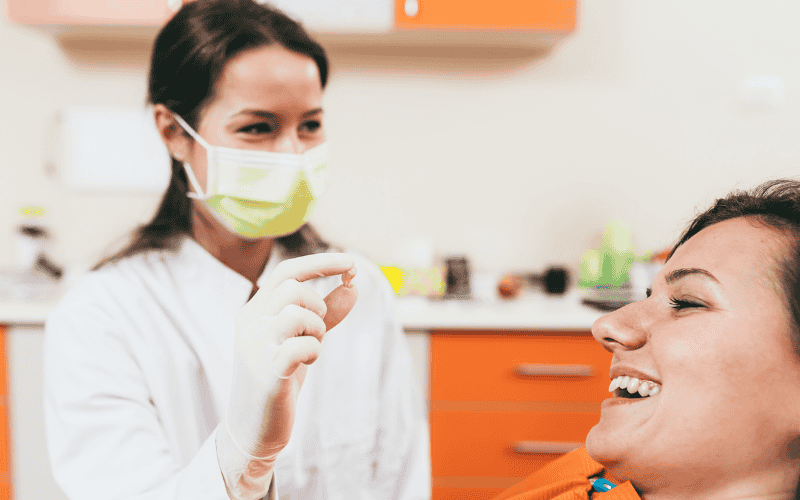ONLINE SCHEDULING AND VIRTUAL CONSULTS AVAILABLE

How Long After Tooth Extraction Can I Eat?

After a tooth extraction, the idea of when you can start eating again can be confusing. Your dentist likely provided instructions, but understanding the timeline and best practices can help ensure a smooth recovery. Eating too soon or the wrong foods can disrupt healing, leading to complications like a dry socket or infection.
So, how soon can you enjoy a meal after your tooth extraction?
The good news is that with proper care, you can start eating again fairly soon. However, timing and food choices are crucial during the first few days. It’s all about allowing your body to heal while avoiding unnecessary risks.
In this blog, we’ll break down the essential guidelines for when and what you can eat after your extraction, how to manage pain, and which foods you should avoid to speed up your recovery. Let’s dive in and make your post-extraction experience a bit easier with clear and helpful advice.
Immediate Aftercare: What to Do Right After the Extraction?
The first few hours following your tooth extraction are crucial for proper healing. During this time, your body is working to form a blood clot at the extraction site, which is essential for recovery. You need to follow some basic guidelines to avoid complications. Right after the procedure, it’s important to avoid eating or drinking. This helps ensure the blood clot forms properly and stays in place.
- Keep your mouth clean but avoid disturbing the clot.
- Avoid drinking from a straw, as the suction can dislodge the clot.
- Don’t eat or drink hot beverages for the first few hours.
- Apply gentle pressure with gauze if bleeding continues.
When Can You Eat After Tooth Extraction? A General Timeline
Knowing when to eat after a tooth extraction can make a big difference in how quickly you heal. The general timeline for eating varies depending on the complexity of the extraction and your overall health. In most cases, you should wait at least 24 hours before eating solid foods.
- First 24 hours: Stick to liquids and soft foods like broth, smoothies, or applesauce. Avoid chewing near the extraction site.
- Day 2-3: You can start eating soft, easy-to-chew foods like mashed potatoes and scrambled eggs, but continue avoiding anything hard or crunchy.
- Week 1: As your healing progresses, you can gradually reintroduce more solid foods, but stay cautious.
- Week 2: By this point, you can often resume a normal diet, but monitor for any discomfort or swelling.
What to Eat: Soft Foods That Won’t Disrupt Healing
After tooth extraction, soft foods are your best bet for promoting healing without causing irritation. These foods don’t require much chewing, which minimizes stress on the extraction site. Start with gentle foods and gradually reintroduce variety as your healing progresses.
- Mashed potatoes: Soft and easy to eat, providing comfort without chewing.
- Yogurt: Smooth, nutritious, and soothing for the mouth.
- Soup: Stick to lukewarm or cool soup to avoid irritating the area.
- Scrambled eggs: A soft, protein-packed option that’s gentle on the extraction site.
- Smoothies (without seeds or pulp): Nutrient-dense and cool, making them easy to consume without discomfort.
Foods to Avoid Immediately After Extraction
Certain foods can hinder the healing process after tooth extraction, increasing the risk of complications like infection or dislodging the blood clot. Avoiding these foods in the first few days is essential for a smooth recovery.
- Hot foods: They can increase swelling and irritation.
- Hard or crunchy foods: Chips, nuts, and crusty bread can get stuck in the extraction site and dislodge the clot.
- Spicy foods: They may cause irritation and discomfort around the sensitive area.
- Sticky foods: Gum, caramel, and taffy can stick to the wound and cause further complications.
- Alcohol: It can slow healing and interact with prescribed medications.
How to Eat After Tooth Extraction: Best Practices
Eating properly after a tooth extraction is key to avoiding complications. You’ll need to be gentle with your mouth during the first few days to ensure the area heals properly. Here are some tips to make eating easier and more comfortable.
- Chew away from the extraction site: This minimizes pressure on the sensitive area and prevents irritation.
- Take small bites: This allows you to control how much force you use and reduces discomfort.
- Eat slowly: Give yourself time to chew carefully and avoid rushing through meals.
- Use both sides of your mouth: If possible, try to eat with the opposite side of the extraction site to avoid aggravating it.
Pain and Swelling Management While Eating
After a tooth extraction, you may experience pain and swelling that makes eating a bit tricky. While this is normal, managing these symptoms is important to make eating more comfortable during recovery. Here are some tips to help you through the process.
- Cold compress: Applying a cold compress to the outside of your mouth can reduce swelling and numb the pain.
- Over-the-counter pain relievers: Medications like ibuprofen can help manage pain and reduce inflammation.
- Avoid chewing on the affected side: This will help minimize pressure on the sensitive area and reduce discomfort.
- Elevate your head while resting: This reduces swelling and helps with healing.
When to Resume Regular Eating Habits?
As your mouth heals, you’ll start to feel more comfortable resuming regular eating habits. But how do you know when it’s the right time? Here’s what to look for:
- No more pain or swelling: When you can eat without discomfort and the swelling has gone down, it’s a sign that you’re healing well.
- Follow-up appointment: Your dentist will monitor your recovery and give you advice on when it’s safe to return to a normal diet.
- Healing time: For most extractions, such as wisdom teeth, you’ll likely be able to resume normal eating after about 1-2 weeks.
Your recovery after tooth extraction doesn’t have to be stressful when you follow the right steps. By eating soft, easy-to-chew foods, avoiding certain items, and listening to your body, you can ensure a smooth and quick recovery. Remember, your dentist is always there to provide guidance and answer questions as you heal. By taking care of yourself during this time, you’ll be back to enjoying your normal eating habits in no time!





